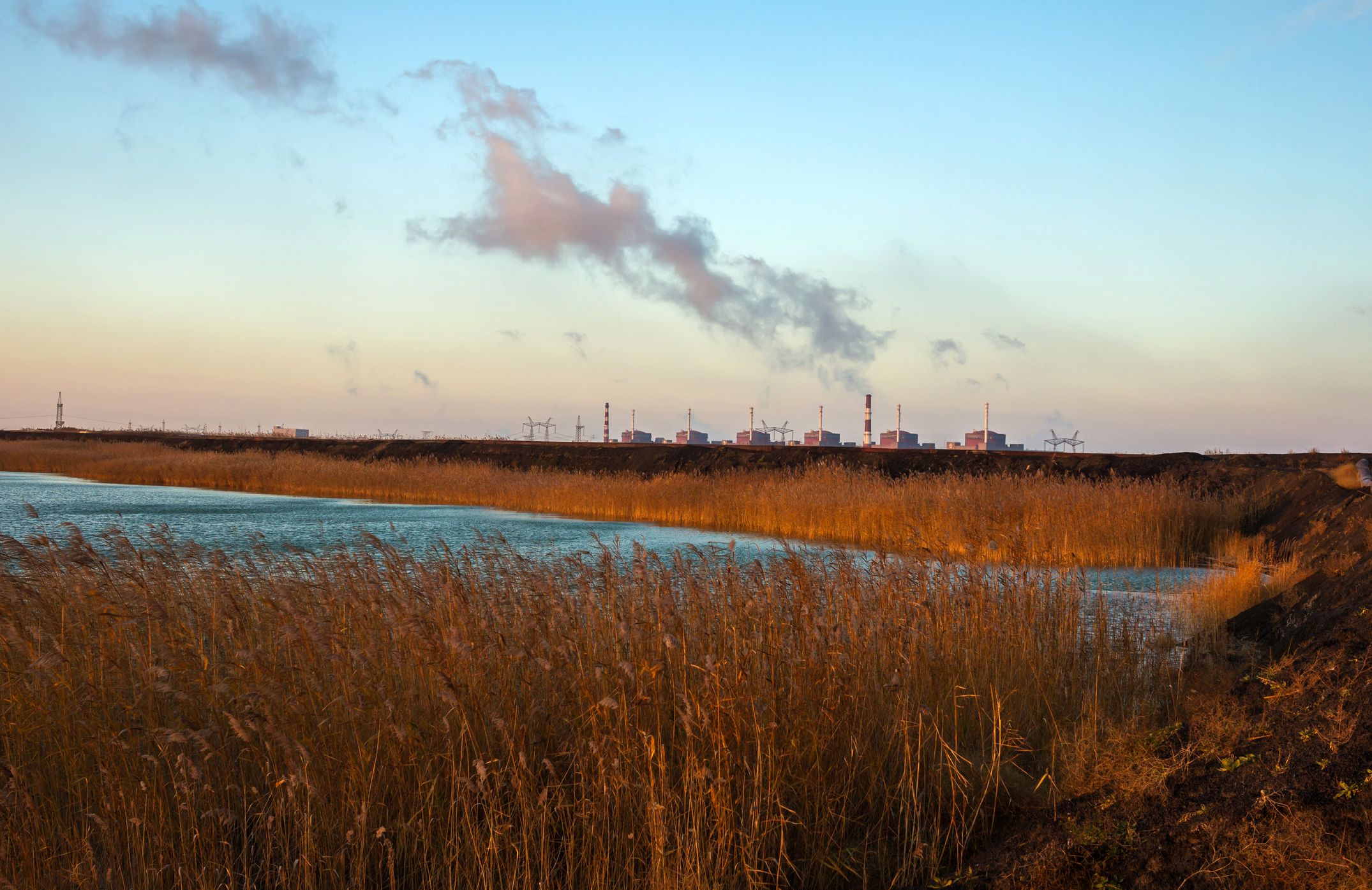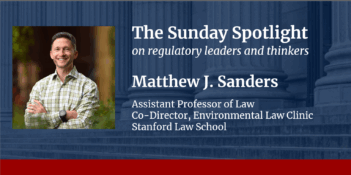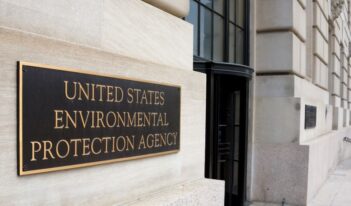
Initial signs suggest that drastic environmental deregulation looms, but there may be much less than the Administration envisions.
What regulatory shifts in environmental law can we expect from the Trump Administration? Answer: It’s hard to know.
Everyone knows that the signs to date point toward deregulation. The head of the Trump Administration’s transition team for the U.S. Environmental Protection Agency (EPA), Myron Ebell of the Competitive Enterprise Institute, proposed cutting the agency’s staff by two-thirds—that is, down to EPA’s staffing levels during the Nixon years, when the agency’s responsibilities were far less than they are now.
Ebell, at least, only had a place in government during the transition. Far more important is newly confirmed EPA Administrator Scott Pruitt, whose chief environmental activity as Oklahoma Attorney General was suing EPA to set aside new rules as overregulation. For instance, Pruitt and others challenged EPA’s Clean Power Plan—a rule aimed at reducing greenhouse gas emissions from electricity generating units —as well as its Mercury and Air Toxic Standards, which seek to limit mercury emissions and other toxic pollution from these same units. There are also rumors that Pruitt will initiate major staff shakeups and that soon-to-be-issued executive orders will call for weakening environmental requirements.
Reinforcing this trend towards deregulation is Congress’s consideration of legislation that would make it more difficult for agencies to regulate. And perhaps most significant is President Trump’s executive order aimed at curbing regulation by focusing on cutting regulatory costs. Although the details of this executive order are far from clear, it apparently instructs agencies to repeal two existing rules for every new rule that they promulgate, and to ensure that the repealed rules are equivalent in cost to the costs imposed by a new rule. Of course, the order will discourage agencies from issuing new rules—even if the new rules have, as is the case with many of EPA’s regulations, monetized benefits far outweighing their costs. Under this executive order, EPA effectively will only be able to make rules required by statute.
The consequence may be a retreat from many of the initiatives of the Obama Administration. For example, the Clean Power Plan may be repealed, or at the least, it will not be administered aggressively. EPA’s “Waters of the United States” rule—designed to clarify which waters are subject to federal regulation under the Clean Water Act—is similarly in trouble.
But we must remember 1981, when the Reagan Administration came into power. Its choice for EPA administrator was Anne Gorsuch, who had little experience in environmental matters. Lobbyists seeking deregulation initially had much influence on the agency. During her short-lived tenure, a draft emerged of proposed amendments that would have eviscerated the Clean Air Act, much to the horror of environmental groups. Gorsuch also repeatedly weakened EPA’s enforcement office. Gorsuch warred with the agency’s career staff: a number of high-level executives were transferred—and some lost their jobs altogether—as punishment for not being sufficiently compliant with the Administration’s priorities.
Capitol Hill looked unpromising, too, during the Reagan years. Then-Representative John Dingell (D-Mich.)—a firm environmentalist, but also someone who was concerned with the interests of auto companies, which employed many of the constituents in his Detroit congressional district—joined with industry and Republicans to put together a package of weakening amendments to the Clean Air Act, including a rollback of auto-emission standards l. And a so-called regulatory reform bill, designed to hamstring agencies from protecting public health and the environment, seemed in 1982 to have a considerable chance for some time of being enacted..
What was the outcome of these deregulatory efforts? For one, Gorsuch’s attempt to reduce the agency’s regulation of lead, a neurotoxin, ultimately led to a considerable tightening of the rules. Gorsuch herself was forced to resign in early 1983 because of a scandal concerning the agency’s Superfund program. In order to restore agency morale and credibility, the Reagan Administration felt obliged to name as the agency’s administrator the moderate William Ruckelshaus, who, years earlier under the Nixon Administration, had served as EPA’s first-ever administrator. The Clean Air Act amendments desired by Representative Dingell and his Republican allies never got out of committee; instead, they were defeated by grassroots lobbying and through aggressive opposition by such legislators as then-Representative Henry Waxman (D-Calif.). And the deregulatory legislation collapsed in the Senate.
Notably, however, by the end of the Reagan Administration, some pieces of environmental legislation had been strengthened. For instance, President Reagan signed the Hazardous and Solid Waste Amendments of 1984, which considerably escalated the controls on the disposal of hazardous wastes. In 1986, the President also signed the Superfund Amendments and Reauthorization Act, which put more teeth into the Superfund program.
This is not to say, of course, that all was ideal for environmental protection during the Reagan Administration. The Administration, for example, fought against proposed regulation of acid rain almost to the end. Still, the results of the Reagan Administration’s efforts turned out to be much less antiregulatory than anyone could have predicted when President Reagan took the oath of office.
There were several constraints on the Reagan Administration, many of which still exist. One limiting factor was the grassroots activity of environmental groups, as with the groups’ successful defeat of efforts to alter the Clean Air Act. Such activity is on full display today: the advent of the Trump Administration has brought about a remarkable growth in fundraising by environmental groups, just as was true in the Reagan years.
Another constraint was litigation brought by these groups. The courts did at times defer to the Reagan EPA’s deregulatory actions (the decision in the famous Chevron case being a prime example). But in the 1970s, the courts had made it clear that agency actions would be carefully examined to determine if they were the product of reasoned decision-making , and the courts established procedural requirements (such as disclosing relevant data and responding to material comments) to help judges make that examination. The Supreme Court made it clear in the State Farm case early in the Reagan Administration that these requirements apply to deregulation as well as regulation. These judicial mandates still exist today; if anything, they may become more limiting now that Chevron deference is being challenged by conservative judges. Thus the courts will remain an obstacle to deregulation.
Congress can be another bulwark. True, unlike in the Reagan Administration, the party that currently controls the White House also controls both houses of Congress. Thus there is no immediate chance that there will be the kind of aggressive congressional oversight of EPA that marked the Reagan years.
But the existence of the filibuster means that the Trump Administration will need the votes of at least eight Democratic senators to pass most significant legislation. Although 10 Democratic senators are up for reelection in states that President Trump carried, his popularity will be crucial in determining whether these senators think that they must approve his policies. He may find that a significant number of his supporters fear that their health and welfare would be endangered by pro-industry environmental policies.
The business community will also provide an important check. Already, executives of major corporations are urging President Trump not to retreat from the Paris accords that the Obama Administration signed. These executives recognize that environmental protection is good for business, in that it leads to the development of innovative technology that can be marketed overseas.
Finally, we should not forget about the states. In general, states in the United States have the power to regulate environmental pollution more strictly than does the federal government. States are, of course, under pressure not to regulate stringently for fear of losing industry to other states, and states also tend systemically to under regulate pollution that has significant effects on other states.
Still, stricter state regulation can and does happen. The greenhouse gas issue is the leading example. States in the Northeast have collaborated on the Regional Greenhouse Gas Initiative, which requires that electricity generators pay for emitting greenhouse gases. California has launched an ambitious cap-and-trade system that gives industry clear economic incentives to reduce those same emissions. It seems unlikely that Congress can restrict these state authorities—at least not without establishing an emissions control program of its own.
Thus, although initial signs suggest that drastic environmental deregulation looms, there may well be much less than the Trump Administration currently envisions.




